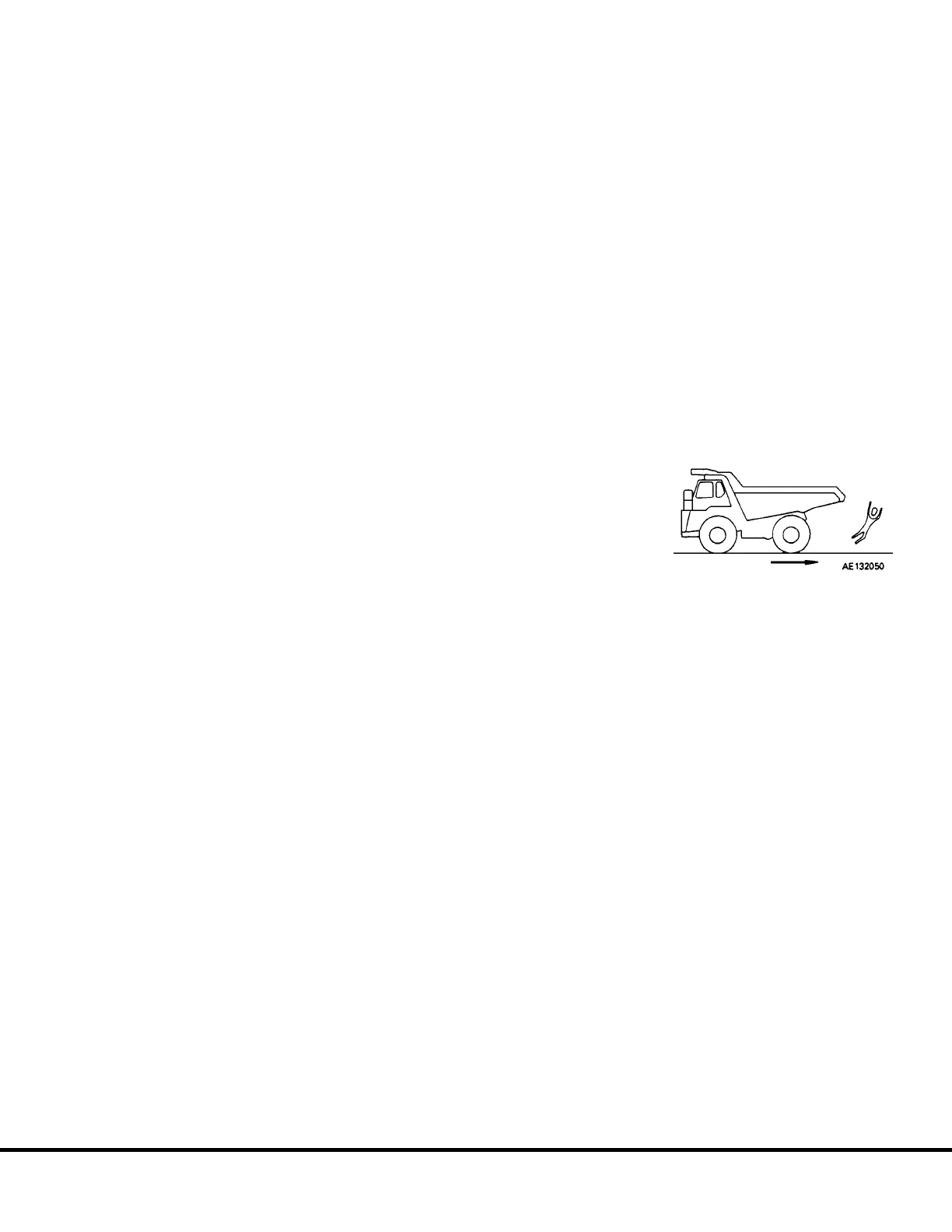• Check for flat tires periodically during shift. If truck has been run on a “flat”, it must not be parked in a building
until the tire cools.
If tire must be changed, do not stand in front of rim and locking ring when inflating tire mounted on the machine.
Observers should not be permitted in the area and should be kept away from the side of such tires.
Tire and rim assembly may expode if subjected to excessive heat. Personnel should move to a remote or
protected location if sensing excessively hot brakes, smell of burning rubber or evidence of fire near tire and
wheel area.
If the truck must be approached, such as to fight a fire, those personnel should do so only while facing the
tread area of the tire (front or back), unless protected by use of large heavy equipment as a shield. Stay at
least 50 ft. (15 m) from the tread of the tire.
In the event of fire in the tire and wheel area (including brake fires), stay away from the truck at least 8 hours
or until the tire and wheel are cool.
• Keep serviceable fire fighting equipment at hand. Report used extinguishers for replacement or refilling.
• Always have parking brake applied when the truck is parked and unattended. DO NOT leave truck unattended
while engine is running.
• When parking, park a safe distance from other vehicles as determined by
supervisor.
• Stay alert at all times! In the event of an emergency, be prepared to react quickly
and avoid accidents. If an emergency arises, know where to get prompt
assistance.
CHECK WHEN TRAVELING IN REVERSE
Before operating the machine or work equipment, do as follows:
• Sound the horn to warn people in the area. For machines equipped with a back-up alarm, check that the alarm
works properly.
• Check that there is no one near the machine. Be particularly careful to check behind the machine.
• If necessary, designate a person to check the safety. This is particularly necessary when traveling in reverse.
• When operating in areas that may be hazardous or have poor visibility, designate a person to direct worksite
traffic.
• Do not allow any one to enter the line of travel of the machine. This rule must be strictly observed even on
machines equipped with a back-up alarm or rear view mirror.
TRAVELING
• When traveling on rough ground, travel at low speed. When changing direction, avoid turning suddenly.
• Lower the dump body and set the dump lever to the FLOAT position when traveling.
• If the engine should stop when the machine is traveling, the emergency steering system will be activated.
Apply the brakes immediately and stop the machine as quickly and safely as possible, and off the haul road, if
possible.
A03017 General Safety and Operating Instructions A3-7
